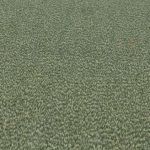Many laser beams with powers well under a watt are commonly used for many applications which include: scientific research, fiber optic communications, LED’s, CD and DVD players, laser printers, range finders and many more. What type of measurement sensor should be used for measuring low power light beams?
Photodiode sensors are sensitive to extremely low power levels, as low as fractions of a nanowatt. However, for many applications a photodiode sensor is not sufficient. Photodiodes are limited to a certain band of wavelengths and the response varies strongly with wavelength. Therefore, a standard photodiode cannot be used to measure a broadband light source. In addition, special attention is required to measure pulsed lasers with a photodiode, depending on the laser’s pulse energy and frequency.
 Ophir has designed a special series of sensors that overcome these challenges. The 3A series are high sensitivity thermal sensors that can measure up to 3 watts and as low as 60 microwatts. Since a microwatt power signal on a thermal sensor can be affected by air currents and noise, the 3A was designed with a small aperture, 9.5 mm, to reduce noise and with a tube surrounding the aperture to block out any air currents (see figure). The 3A series is very useful for measuring low power beams and Ophir has many satisfied customers who use it.
Ophir has designed a special series of sensors that overcome these challenges. The 3A series are high sensitivity thermal sensors that can measure up to 3 watts and as low as 60 microwatts. Since a microwatt power signal on a thermal sensor can be affected by air currents and noise, the 3A was designed with a small aperture, 9.5 mm, to reduce noise and with a tube surrounding the aperture to block out any air currents (see figure). The 3A series is very useful for measuring low power beams and Ophir has many satisfied customers who use it.
Recently, Ophir came out with a 3A beam track sensor that can measure beam location as well as power. It is quite difficult to center a beam in the standard 3A. The aperture is small (9.5mm) and the sensor surface is recessed way below the surface. If the beam is even slightly off center, the edges of the beam can be missed and there can be an error in reading of several percent. The 3A-QUAD makes centering the beam a cinch.
You might also like to read:












Leave a Reply
Your email address will not be published. Required fields are marked *